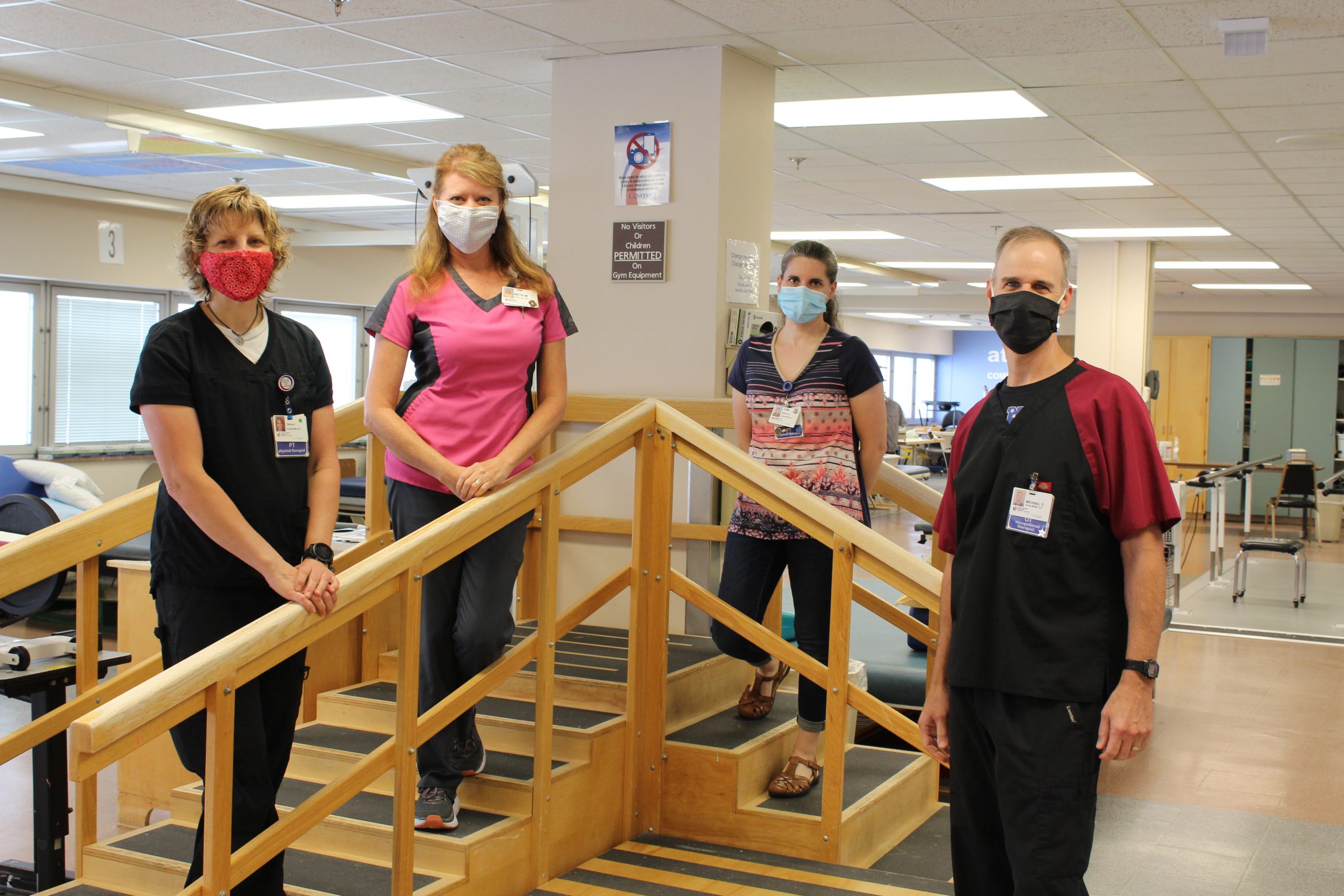- Find a DoctorDoctors by Specialty
- Cardiac Electrophysiology
- Cardiology
- Colon & Rectal Surgery
- Family Medicine
- Gastroenterology
- General & Vascular Surgery
- Gynecological Oncology
- Gynecology
- Infectious Disease
- Internal Medicine
- Interventional Cardiology
- Interventional Radiology
- Nephrology
- Neurology
- Neurosurgery
- Obstetrics & Gynecology
- Oncology
- Oncology & Hematology
- Orthopedic Surgery
- Otolaryngology
- Perinatology
- Psychiatry
- Pulmonary Medicine
- Radiation Oncology
- Rheumatology
- Sleep Medicine
- Thoracic Surgery
- Urology
- View All Doctors
- Our ServicesMedical Services
- Bariatric Services
- Behavioral & Mental Health
- Breast Care
- Cancer Care
- Critical Care
- Ear, Nose, & Throat
- Emergency Services
- Gastroenterology
- Glossary
- Heart Care
- Home Care
- Hospice & Palliative Care
- Imaging & Diagnostics
- Long-Term Care
- Nephrology
- Orthopedics
- Primary Care
- Rehabilitation Therapies
- Robotic-Assisted Surgery
- Sleep Services
- Spine Care
- Stroke Care
- Surgery Services
- Telehealth Services
- Urology
- Urgent Care
- Virtual Urgent Care
- Women’s Services
- Wound Care
- Our Locations
- Patients & Visitors
- About Us
Patricia Neal Rehabilitation Center Team Reflects on Spinal Cord Injury Awareness Month
 Every year, there are more than 17,000 new spinal cord injury (SCI) cases in the United States. Many of these cases require intense rehabilitation to recover from the injury. At Patricia Neal Rehabilitation Center, the SCI team is ready to care for those disabled by spinal injury and disease with the goal of recovering the patients’ greatest degree of functional independence and highest quality of life possible.
Every year, there are more than 17,000 new spinal cord injury (SCI) cases in the United States. Many of these cases require intense rehabilitation to recover from the injury. At Patricia Neal Rehabilitation Center, the SCI team is ready to care for those disabled by spinal injury and disease with the goal of recovering the patients’ greatest degree of functional independence and highest quality of life possible.
The program involves multiple medical disciplines that work closely together and requires dedicated involvement by the patient and their support system in goal-setting, therapy and evaluation. As Patricia Neal’s third most commonly treated diagnosis in 2019, spinal cord injuries keep the team busy restoring abilities and rebuilding lives.
Some members of the SCI team at Patricia Neal recently discussed spinal cord injuries and treatment at PNRC in honor of Spinal Cord Injury Awareness Month:
- Nicole Bummara, SCI program co-lead and outpatient physical therapist
- Theresa Asbury, SCI program co-lead and inpatient recreational therapist
- Tricia Erpelding, outpatient physical therapist
- Beth Martha Melancon, outpatient occupational therapist
- Michael Orillion, inpatient occupational therapist
What does Spinal Cord Injury Awareness Month mean to you?
Nicole: Spinal Cord Injury Awareness Month is important to recognize because there have been so many more people diagnosed with SCIs in recent years, and despite some improvements in community access, an increased need for more widespread and efficient accessibility in the community exists. This gives an opportunity for people who have been affected by their own injury to have a voice and express their experiences as well as to share success stories and be proud of what they’ve accomplished. This is also an opportunity for people in the community who do not have a spinal cord injury or do not have regular interactions with people who have SCIs to become more aware and recognize the different experiences, both challenging and rewarding, that individuals with SCIs experience every day.
What’s the least understood aspect of spinal cord injuries?
Tricia: Patients say there’s difficulty maneuvering in their environment, in their daily life at home and in the community. Finding out there are a lot of places that aren’t accessible is challenging.
Mike: It doesn’t have to be a major obstacle. Accessibility issues can result from a couple of inches of something on the ground that a power chair slips on.
Beth: A lot of my patients say that people don’t understand that they’re still the same person that they were before the injury. Nothing has changed with their thoughts, feelings, likes or dislikes.
Theresa: There are limitations to doing some of the leisure activities that they most enjoy because of deficits their SCI has caused. That includes riding motorcycles or horses, hunting in the woods, cooking, caring for their family, hiking or other common ways of finding enjoyment.
How do you prevent a spinal cord injury?
Mike: Know your boundaries and your abilities. Don’t overextend yourself when you’re on a ladder or working in trees. We see a lot of accidents with things like that.
Beth: There’s a program here called ThinkFirst where nursing staff, therapy staff and usually someone with an SCI goes into the community to educate kids at an earlier age about preventive, precautionary things like jumping into water with their feet first, not their head first; wearing a seatbelt, and a lot of other safety and awareness topics. That helps with some prevention.
What’s the best part of working with patients who have spinal injuries?
Tricia: The challenge of helping get these folks to their most optimal levels of abilities and making their quality of life better, even if they may not have the ability to walk.
Mike: I enjoy getting to know the person. Like Beth said earlier, they’re still the same person, just in a new world. I like trying to show them that there is a light at the end of the tunnel and that they can get back to doing things — it just might be in a different way.
Nicole: It’s really great to learn from our patients. I’ve found over the course of my physical therapy career that I’ve learned so much more on different topics from my patients with SCI than I ever could have imagined. They still teach me every day and help me see things in a different light.
Theresa: As a recreational therapist I have had the good fortune of staying in touch with many of my patients for the nearly 20 years I have worked here. I have watched many redefine their lives and accomplish things they weren’t considering prior to their SCI.
Tell us about the team aspect of working with spinal injury patients, both inpatient and. outpatient, and across disciplines.
Beth: There’s a lot of communication that goes on between inpatient and outpatient therapists. We’re all 100 percent devoted to help the patient as much as possible to meet their own goals and to improve their lives.
Nicole: All of our patients are multi-faceted beings, and each aspect of their life needs to be acknowledged and valued so they feel complete. At Patricia Neal we offer a team approach. The possibility of having physical therapy, occupational therapy, speech therapy, recreational therapy and behavioral medicine all at our fingertips is a huge asset. Not every patient may need all of those things, but the fact that we have the potential to offer them and call upon other clinicians for advice really makes it so much better for the entire team—the patients, the families, the caregivers and the PNRC staff.
























